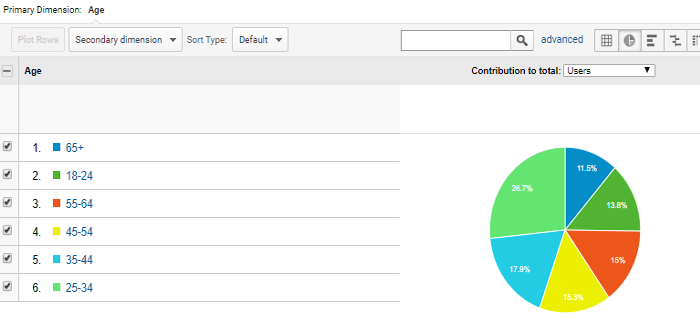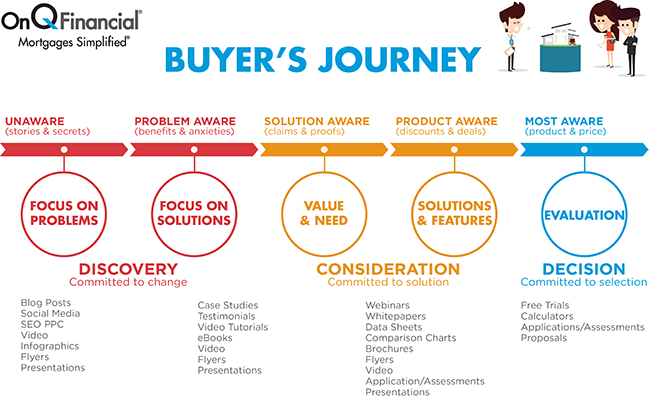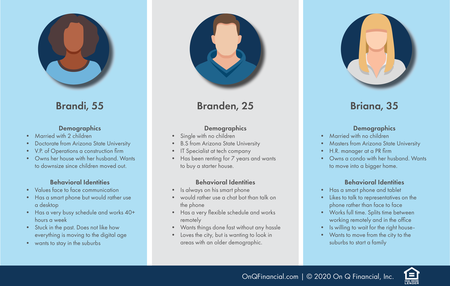How to Create Unique Content through User Personas

As a blogger, I’m sure you’ve experienced writer’s block. It’s tricky to overcome! Continuously creating exciting content for your audience is not an easy task. Even when an idea strikes, it can be hard to know how your readers will engage with it.
The importance of personas
An easy and effective way of navigating this is through user personas. Personas allow you to create an idea of your target audience to refer to when you’re questioning what their interests are. Instead of writing a food blog for a generalized audience of adults, you can envision a persona such as Emily, a 33-year-old teacher with two young children trying to find resources on quick and healthy family meals.
It’s easier to gain devoted readers when your content is written specifically to answer their pain points. Someone won’t want to subscribe to a blog and engage continuously with the posts if only 20% of them feel relevant to their life. By using personas, you can narrow down topics that are of interest to your readers, and they’ll likely want to continue seeing your great content.
How to create personas for your blog
To create personas, you’ll want to look at your data. Look at who is visiting your site and engaging with you. If you have a Facebook page for your blog, you can use Facebook Insights to find the gender, age, location, and interests of your followers. Google Analytics is another great way to track the traffic to your webpage that gives you the same type of information. A helpful pro-tip is to compile all of this data from different websites into Google Data Studio so you can see an overview of all of it.
Take a look at the following Google Analytics breakdown of age. The largest age group is between the ages of 25-34, while only 11.5% is over the age of 65. In this scenario, you’ll want to relate most of your content to a younger audience. However, don’t completely neglect your smaller audience. Create different content to appeal to different audiences.

A helpful tip would be to look at separate data of the people who are actually subscribing to your blog, clicking on affiliate links, or if you’re running your blog for your business, to look at consumer data. These are the people who are actively engaging with your content. This audience is your best bet on finding what types of people are more likely to be drawn to your page.
Now that you’ve gathered the data, you can start building personas. Ask yourself commonalities between these people that are already your audience. If you find that 64% of your audience is women, make three of your five personas also be women.
Another way to segment your audience is by basing it off of how far they have gone on your conversion path. See what types of people are going further, where certain people are stopping, and use this information to help guide your persona creation.
Creating content for each stage in the buyer’s journey
If you’re using your blog to promote your business, using the buyer’s journey alongside user personas can help to create content for each stage of the purchase process. The awareness, consideration, and decision stages need to be considered, and different content needs to be made for each.
This infographic gives an excellent overview of the buyer journey and some different ways of delivering the information needed. Blog posts are great for each stage!

Awareness stage
The awareness stage is when the pain point becomes evident to the user. They realize they have a problem that needs fixing through some type of product or service. You should determine pain points in your personas so that you’re able to target these effectively.
You can even target your audience before they realize they have a pain point. You can promote your content to the audience that matches your personas and seeing that could show them how your product or service can be helpful to them.
Let’s use the previous example of the persona of Emily. Let’s say you’re selling a guide for a month of healthy meal-planning to save money and time. Before she even realized she needed assistance in planning meals, she could stumble upon a post of yours about the importance of switching up a child’s meals instead of repeating the same six meals every week.
The critical part of the awareness stage content is to deliver information. The audience isn’t ready yet to make a decision, and instead are looking to gain more knowledge on the problem at hand. For this type of content, you won’t want to start pitching sales. Instead, educate your audience on the topic.
Refer to your buyer personas and relate your content to them. With Emily, you’ll want to highlight the impact diet has on a child’s development. By creating great informative content that’s relative to their lives, you’ll appear as an expert, and your value will raise in your readers’ eyes.
A great example of this is on On Q Financial’s home page. The user is asked if they’re a home buyer, realtor, builder, or mortgage consultant, and depending on which one they choose, they are given information that is relevant to them. They are walked through the process that they’ll go through via videos and writing and are given options to apply after being educated.

Consideration stage
During the consideration stage, your audience is laying out options and resources to address their pain point. They’ll start gathering information on different solutions and comparing the benefits and drawbacks of each. For this part of the buyer journey, you should create content that helps them see how your product can help him specifically in comparison to others.
The content for this stage is another great way to drive value to yourself and show expertise. Think of other options they may be exploring and provide some information on those as well. As always, make sure your information applies to your personas. With Emily, you’ll want to show how your solution helps her kids as well as helps her be more time-efficient.
Decision/purchase stage
At this point, your audience is ready to make a purchase. This stage is where you should create content to show how your product or service is superior in meeting their needs. Provide testimonials from past customers so potential customers can see how you can help impact their lives.
It’s always important to anticipate rebuttals from consumers. Think of some concerns that might arise by referring to your personas, such as price or accessibility, and combat these in decision content. With Emily, you might want to show how purchasing this meal-planning guide can actually help save money by reducing produce waste.
Another great tip is providing demos or free trials. In this example, you could create a free 7-day meal guide to show just how easy and helpful your product is.
How to optimize your new content
At last, you’ve finished creating personas and the content to go along with it. Congratulations! But, your work isn’t over yet. Make sure to optimize keywords in your content to drive traffic to your site. Without showing up in search results, great content is pretty useless.
Next, make sure that you are reaching your audience. Tracking your data with Google Analytics is a great way to see who is seeing your content and interacting with it. Remember, you can’t create content and let it go. It’s okay to adjust your content and the keywords to improve performance!
Now, creating personas and the content to go with them isn’t an overnight thing. It can take months to go through the whole process. Good things take time, and your content is no different! Keep pushing through, and your hard work will pay off.
About Ben Holland:
Ben is a digital marketing expert that helps businesses of any size improve leads and conversion. He specializes in SEO, online advertising, and analytics. In his free time, he enjoys camping, sports, and spending time with his son.

